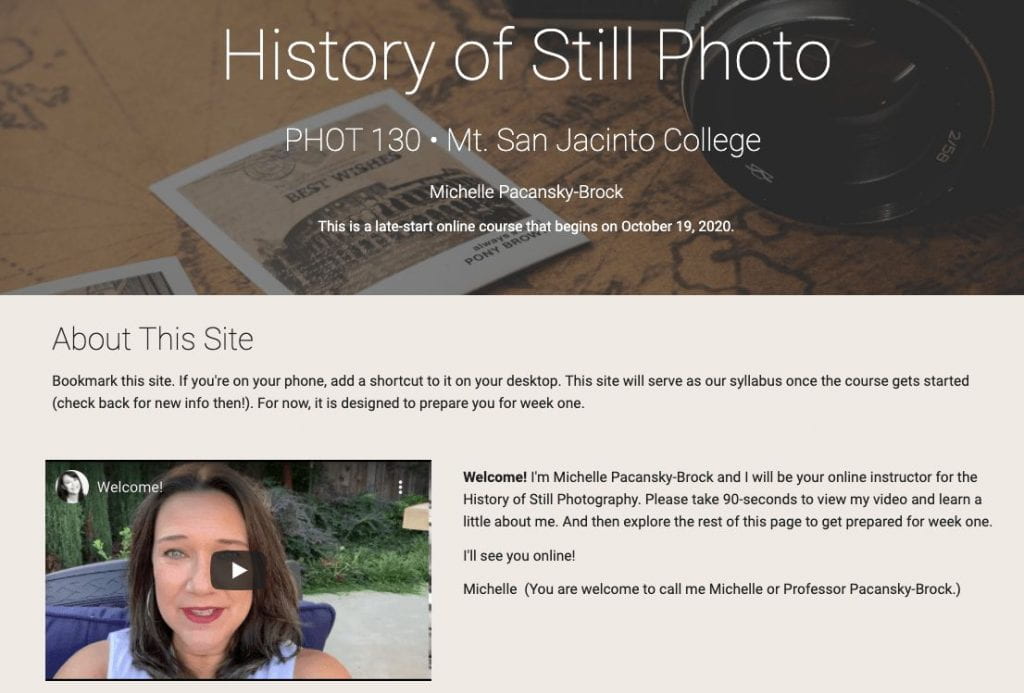Article by Kris Vespia
As a counseling psychologist who is an active teacher and a scholar in the area of college student mental health, I pay particular attention when I hear my teaching colleagues express concern about seeing more students in emotional distress. I am also keenly aware that these student issues do not only present in university counseling centers. They also reach into classrooms and instructor offices. Instructors, though, typically have no formal training in how to respond. How are we as educators to best react when a student self-discloses a trauma during class and begins to cry while other students stare awkwardly at their desks? Or when an advisee softly admits in an individual meeting that they have been thinking about suicide? Or when a student emails to ask for an extension because they are struggling to adjust to their new medication for Bipolar Disorder?
I have had many more conversations about these topics since the pandemic began. I hear from faculty who say they are seriously concerned about student mental health and feel both an obligation to act and tremendous uncertainty about what to do. Layered on top of that uncertainty undoubtedly is the additional strain instructors have also been under, leaving them less able to expend the emotional labor involved in such situations. I am hoping this blog will serve three purposes: a) to provide some context for the mental health issues instructors are seeing, b) to give some preliminary tips for working with students in distress or with mental illness diagnoses, and c) to offer a repository of the mental health resources available to UW-Green Bay students so you can make referrals and consult, as needed.
First, let’s talk context. You should know that you are likely seeing an increase in student distress, but that is not a new phenomenon. College student mental health needs were critical long before the COVID-19 pandemic. A few statistics may help. Almost 20% of Americans have a diagnosable mental illness, and the most common time of initial onset for many of those conditions is traditional college age (National Institute of Mental Health/NIMH, 2021). In fact, the highest prevalence rates of mental illness overall and of serious mental illness specifically are between the ages of 18 and 25 (NIMH, 2021), and that distress appears to have increased over the last decade or more. For example, CDC data show that suicide is the second leading cause of death for young people, and suicide rates among those aged 10-24 increased over 57% from 2007 through 2018 (Curtin, 2020). Looking at college students specifically, results from two large, national datasets show moderate to severe anxiety and suicidal ideation almost doubled between 2012 and 2017-18 (Duffy, Twenge, & Joiner, 2019). Perhaps not surprisingly then, even though national statistics suggest the majority of people with mental illness (including college students) do not seek treatment, across 150 universities throughout the U.S., counseling center use still went up an average of 30-40% during a 5-year period in which overall student enrollment increased by only 5% (Center for Collegiate Mental Health, 2018).
The COVID-19 pandemic has only made a challenging situation worse. The American Psychological Association (2021) has worked to document emotional and behavioral responses with their Stress in America survey, and they found adults between 18 and 23 (“Gen Z” adults) were the most likely age group to report decreased mental health as a result of the pandemic. On another national survey of 32,754 college students conducted in Fall 2020, substantial numbers reported some degree of depression (39%) and/or anxiety (34%) on answers to a mental health screening questionnaire (Eisenberg, Lipson, Heinze, & Zhou, 2021). And, you are not alone in your perceptions: surveyed faculty from 12 institutions across 10 states also said (87% of them) that students’ mental health had either “worsened” or “significantly worsened” in the pandemic (Lipson, 2021).
I also want to stress that statistics do not tell the whole story. What likely matters more to instructors is that mental illnesses have substantial deleterious consequences for individual human beings – human beings they know and care about. Those effects might include significant pain and distress, negative impacts on relationships, and reduced ability or even inability to function effectively in school or at work. These conditions are not something a person can “snap out of” or a sign of personal weakness or failure. Too many sufferers, however, believe those myths (U.S. Department of Health & Human Services, 2017). Mental illnesses are instead legitimate, sometimes very serious medical conditions; most are quite treatable, but those treatments can take significant time to bring relief. Consider this example. We use the word “depression” casually in everyday conversation as though it is simply a passing mood state. True diagnosed depressive disorders, though, are ranked by the World Health Organization (2017) as the leading cause of disability globally. Blue Cross Blue Shield (2018) has published data that also suggest people with Major Depressive Disorder (MDD) have health care costs that average more than twice that of other consumers (i.e., more than $10,000 annually compared to over $4000) due to the costs of treating depression itself and its associated co-morbidities. More importantly, people with MDD and other mental illness diagnoses are more likely to die by suicide, which is the ultimate reason to take these conditions seriously.
In the midst of this sobering picture, there is good news. You can do quite a bit to help as a faculty member with some pretty simple actions. You are also never alone in these situations, and you and our students have wonderful campus and community resources at your disposal. You can view and print a full list here, and specific tips for instructors are included below.
Tips and Resources for Instructors
Click each tip to expand the accordion and read more.
Many students with mental health concerns have symptoms that impact their coursework. In fact, in the national survey of 30,000+ college students mentioned earlier, 83% of them indicated their academic performance had been adversely affected by their mental health in the previous month (Eisenberg et al., 2021). There are countless ways this can happen; let me highlight just a few possibilities. Major Depressive Disorder has a long list of symptoms, but beyond the potentially debilitating emotional impact, a few other common indicators include difficulty concentrating, insomnia or hypersomnia, substantial fatigue, and recurring thoughts of death. Imagine trying to read a textbook page when you are: exhausted from lack of sleep, feeling as though it takes every ounce of energy you have simply to put one foot in front of the other, reading the same words over and over without processing them, and focusing extensively on repeated thoughts of worthlessness or death. As another example, individuals with PTSD may deal with intrusive flashbacks or be so hypervigilant to small noises in the classroom as potential threats that they don’t process instructors’ words. Bipolar I Disorder can come with depressive lows, but we know it also involves manic episodes characterized by grandiosity, racing thoughts, and highly impulsive behavior. This student might start and finish a 15-page paper in one all-nighter and find in the morning that the words they thought were genius at 4 am are only pages of true gibberish. Finally, consider the student with an eating disorder who spends hours each day thinking obsessively about food, exercising compulsively, or hiding their binge and purge behaviors from others – or imagine the person suffering from schizophrenia who occasionally hallucinates and is completely preoccupied with voices in their own head during class time. You should know that of the UWGB students who have official disability accommodations, the greater numbers are for psychiatric, not physical, conditions. And the students with accommodations are likely only a very small fraction of those struggling with mental health concerns. That having been said, a student may be suffering substantially, and you will have no clue. We most frequently cannot “see” mental illness or know when it is happening, and stigma prevents many from self-disclosing. You have likely worked with, been friends with, or loved someone with a mental illness and never known it. People can be very skilled at hiding both physical and emotional pain.
We can help all students, including those who have a mental illness or who are experiencing acute emotional distress, by demonstrating that we: a) understand students’ multiple roles and responsibilities, b) welcome student communication, and c) have a willingness to be flexible. These three things will likely result in students feeling supported and seeking assistance when necessary. Empathy and flexibility can look like and be many things for different people, and it doesn’t have to mean being “warm and fuzzy” or granting every student’s request. If it helps, the greatest problem I tend to encounter is convincing students to accept extensions or an Incomplete because “it isn’t fair to others,” they “didn’t know they could ask,” or they “should be able to handle things on their own.” You may also be surprised by who the students in emotional pain are because they may be doing quite well in your class, but as the oft-quoted meme goes: “Just because someone carries it all so well doesn’t mean it’s not heavy.” If we offer some flexibilities to all students, we don’t need to worry about challenges associated with identifying those most in need. Here are some small but specific examples.
- Sleep hygiene is very important to mental wellness, and yet we inadvertently encourage late nights or “all-nighters” with default deadline times of 11:59 pm in Canvas or by using early morning times instead. Why not use 5 or even 7 pm?
- I know instructors who give students one “mental health day” each semester that they can take for any reason and then make up the work another day.
- Similar to the mental health day, instructors can provide students a “free pass” good for one penalty-free late assignment.
- Reconsider asking for a “doctor’s note” to justify extensions or absences. Students without insurance may not be able to see a doctor, and not all insurance covers mental health care.
- Course content can be extremely distressing to students for unpredictable reasons. I do not use so-called “trigger warnings.” Instead, I inform students that I can’t predict what might elicit distress, but all students are free to leave the classroom or stop watching a video in online courses if that happens. They can check in with me later about whether or how to make up the work.
- Be willing to consult with the Dean of Students, Student Accessibility Services, or Counseling services in the Wellness Center about academic flexibilities for specific students, as needed. Flexibility and compassion are important, but there are times when the most compassionate thing we can do is to encourage a student to take time away to work on their health before returning to school.
Amy Henniges and I worked to create a list of resources for all four campuses, as well as the local crisis lines for each community. They are now located on The Wellness Center website. Review and then bookmark or print this list for future reference. Share the ones for your campus in your syllabus or on the course Canvas site with a note encouraging their use.
Remember that you are not alone when dealing with student mental health concerns. Here is some information, along with some tips, you may find helpful.
Facts to keep in mind…
- You do not have a confidential relationship with students in the way counselors do. If a student talks to you about suicide, that is something you can and should share with a professional. You also have state mandates to follow related to reporting child abuse and sexual assault.
- You will not “put the idea in their head” if you ask someone whether they are having thoughts about suicide. A common reaction to that question is the person feeling relieved to share with you.
Strategies for Helping and Consulting
These strategies cover everything from emergencies and urgent situations to proactive strategies to reach all students in your classes.
- Emergencies: As noted on the resource list provided, in a true mental or physical health emergency, you should call 911.
- It is possible to call the Wellness Center’s Counseling services and/or Dean of Students Office to ask if someone is available to physically see or virtually meet with a student and explain the situation (if it’s not a 911 emergency, but you still feel the student needs to talk with someone urgently or at least that day). On the Green Bay campus, I’ve even occasionally just walked a student from my classroom to one of those offices. On the Manitowoc and Sheboygan campuses, you can also call the Agnesian number and ask about an appointment that day or for a counselor who can talk by phone.
- If I’m in a situation where the student is with me (e.g., in my office), and I want to consult about the best resources for them or see if a counselor is available to talk with them, I typically call in front of the student. I want to be transparent and have them know I’m not “talking about them behind their back.” Of course, there can be times when that would not be appropriate.
- In non-urgent, non-emergency situations, you can complete a “Students of Concern” Report on the Phoenix Cares website. The Behavioral Intervention Team or CARE Team will follow up on the situation. If you are unsure about whether to file a report, call the Wellness Center’s Counseling services or Dean of Students Office, explain the situation, and ask.
- If something happens after business hours (e.g., a night class) where you feel the student needs to talk to someone, but it’s not a 911 emergency, you can use the community 24/7 crisis line or, in Sheboygan and Manitowoc, you can speak to a counselor at Agnesian 24/7 by calling that number. You can consult with these services for suggestions about what to do, and you can also call and hand the phone to the student.
- If you are anxious about what to do or afraid you will make a situation worse, even if it seems like it’s a minor issue, find a colleague you trust. Better yet, ask the student about an employee on campus they trust. There’s nothing wrong with telling a student you are concerned about them and want to help, but you want to call someone or bring someone else into your office so that you can all figure out a good plan together.
- Feel free to raise the issue of counseling or support if a student isn’t asking for your help but mentions stress or personal difficulties in passing. If you encourage and normalize counseling (e.g., “we all need support from time to time”; “people see counselors for everyday problems, not simply for mental illness treatment”), that may make a real difference.
- Consider professional development in mental health issues. We will have a new opportunity on campus in fall 2021: Kognito trainings. Kognito uses simulated experiential role-plays specific to universities so students, faculty, and staff can encounter and practice in different scenarios. The initial At-Risk Simulation modules are designed to help us: a) recognize and identify signs of distress in self, peers, and students; b) communicate effectively to support someone in distress; c) understand support options; d) effectively refer people to resources; and e) self-reflect and apply strategies for resilience.
About Kris Vespia
 Kris Vespia is a Professor of Psychology and the Interim Director of CATL for 2021-22. She has published in the areas of mental health services on college campuses, cultural diversity and mental health, and career development. She is also interested in the mental health literacy of college students and the general public.
Kris Vespia is a Professor of Psychology and the Interim Director of CATL for 2021-22. She has published in the areas of mental health services on college campuses, cultural diversity and mental health, and career development. She is also interested in the mental health literacy of college students and the general public.




 James is an Associate Professor of Chemistry with research interests that are largely Scholarship of Teaching and Learning (SotL) based, including the incorporation of pseudoscience-based projects in support of information literacy, and the support of student mental health in the classroom. James also actively develops Open Educational Resources (OERs) for use in the chemistry classroom.
James is an Associate Professor of Chemistry with research interests that are largely Scholarship of Teaching and Learning (SotL) based, including the incorporation of pseudoscience-based projects in support of information literacy, and the support of student mental health in the classroom. James also actively develops Open Educational Resources (OERs) for use in the chemistry classroom.